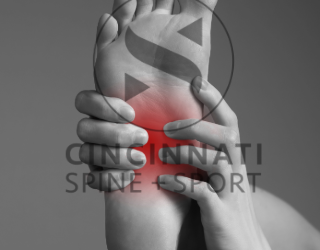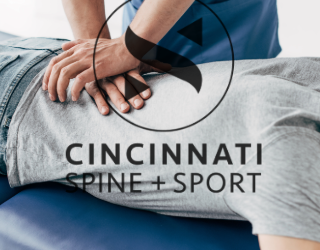Shoulder impingement is a common condition that occurs when the tendons of the rotator cuff become compressed or irritated as they pass through the subacromial space, the area beneath the acromion (part of the shoulder blade). This can lead to pain, inflammation, and reduced range of motion. At Cincinnati Spine and Sport, we utilize various treatment methods to address shoulder impingement, including dry needling—a highly effective technique for relieving pain and improving function.
Understanding Shoulder Impingement
Shoulder impingement often arises from overuse, poor posture, repetitive overhead activities, or muscle imbalances. The condition can cause symptoms such as:
- Pain during lifting or reaching
- Discomfort when lying on the affected shoulder
- Limited shoulder mobility
- Weakness in the shoulder or arm
- A clicking or popping sensation in the shoulder
Traditional treatments for shoulder impingement include physical therapy, anti-inflammatory medications, and corticosteroid injections. However, dry needling has emerged as a valuable addition to these methods, offering unique benefits for patients.
What is Dry Needling?
Dry needling involves inserting thin, sterile needles into specific points in the muscles, known as trigger points. Unlike acupuncture, which is rooted in traditional Chinese medicine, dry needling is based on modern Western medical principles and is used to treat musculoskeletal pain and dysfunction.
The needles used in dry needling do not contain any medication or fluid; hence the term “dry.” The technique aims to relieve muscle tension, improve blood flow, and reduce pain.
Benefits of Dry Needling for Shoulder Impingement
- Release Muscle Tightness and Trigger Points:
- Dry needling targets tight or knotted areas within the shoulder muscles, particularly in the rotator cuff and surrounding muscles. By releasing these trigger points, the technique helps reduce muscle tension and alleviate pain, allowing for improved shoulder mobility.
- Reduce Inflammation and Promote Healing:
- The insertion of needles stimulates a local inflammatory response, which can enhance the body’s natural healing processes. This response increases blood flow to the affected area, delivering essential nutrients and oxygen that aid in tissue repair and reduce inflammation.
- Improve Range of Motion:
- By addressing tight muscles and fascia (the connective tissue surrounding muscles), dry needling can help restore normal muscle function and flexibility. This improvement in muscle elasticity and joint mobility is crucial for relieving the mechanical compression that causes impingement.
- Enhance Muscle Activation and Strength:
- In some cases, muscle imbalances contribute to shoulder impingement. Dry needling can help “reactivate” muscles that have become inhibited or weakened due to pain or injury. This reactivation is essential for restoring balanced muscle function and supporting proper shoulder mechanics.
- Quick and Effective Pain Relief:
- Many patients experience immediate pain relief following a dry needling session. This rapid reduction in pain allows for more effective participation in physical therapy and other rehabilitative exercises, accelerating the recovery process.
- Complementary to Other Therapies:
- Dry needling can be seamlessly integrated with other treatment modalities, such as chiropractic care, physical therapy, and manual therapy techniques. This comprehensive approach addresses the underlying causes of shoulder impingement and promotes long-term recovery.
What to Expect During a Dry Needling Session
During a dry needling session, a trained practitioner will insert needles into specific points in the shoulder muscles. Patients may feel a mild discomfort or a “twitch” response when the needle stimulates a trigger point. This sensation is typically brief and followed by a release of muscle tension.
After the session, some patients may experience mild soreness, similar to that after a workout, which usually resolves within a day or two. Patients often notice immediate improvements in pain and range of motion.
Is Dry Needling Right for You?
Dry needling is a safe and effective treatment for many patients experiencing shoulder impingement. However, it may not be suitable for everyone, particularly those with certain medical conditions or who are uncomfortable with needles. A thorough evaluation by our healthcare professionals at Cincinnati Spine and Sport will help determine if dry needling is appropriate for your specific case.
Conclusion
Dry needling offers a powerful tool for treating shoulder impingement, providing relief from pain, reducing muscle tension, and improving shoulder function. At Cincinnati Spine and Sport, our skilled practitioners integrate dry needling with other therapies to create a comprehensive and personalized treatment plan for each patient. If you’re struggling with shoulder impingement, contact us today to learn more about how dry needling can help you achieve a pain-free, active lifestyle.
Understanding the benefits of dry needling can empower you to make informed decisions about your health and recovery. We’re here to support you every step of the way on your journey to optimal shoulder health and well-being.





